#murad iii
Explore tagged Tumblr posts
Text
Nurbanu and her precious boy








9 notes
·
View notes
Text
kehribar-sultan: Well thakns four your appreciation, yeah, I really tried hard......But, first I would like to say some words about your comment: 1) I would like to get your acceptance and recognition of possibility that Safiye had all of these four daughters. I would stress out that ambassadors only talked about children of the Topkapi Palace who were notable in political life (case with Murad IV’s four full sisters). I do not agree with you, Ahmed Pasha (Mirahur in 1604) was named governor of Rumelia two times; firstly in 1614 and secondly in 1614. And he wasn’t Aga of the jannisaries. The Pasha you’ve mentioned is someone else. Beside, I found in Dumas’s 2013 book that Mihrimah was same as Mihriban (page 82, note 171). Anyway, she died in early 1610s I quess, and her husband remarried to her half-sister Fahri Sultan in September 1613. Anyway, I suggest that Mihrimah was the eldest, as I proved in citations that Mehmed had a two years older sister than him. Also, I (most strongly) suggest that Hümaşah was Safiye’s daughter, even the youngest, as her husband Hasan Pasha was placed in Divan of Ahmed I, and he referred to her as halem. 2) I didn’t get your comment about suggested (officially unknown) sons-in-law of Murad III, such as Boyali Mehmed Pasha, Siyavush Pasha (failed) and Serdar Ferhad Pasha. I mean, all that marriage negotiations in early 1590s prove that Safiye had more than two daughters. 3) I would suggest that Murad III’s daughters Saime and Fahri were his longest-living daughters, who died in late reign of Mehmed IV (Hümaşah, Beyhan and Hatice died in early reign of Mehmed IV). Anyway, I need to stress out that Fahri’s full name was Fahrihan (source: https://www.isam.org.tr/uploads/6595588ee2276.pdf - page 494 ; also there is Saime too – page 138) 4) I have suspitions that Murad III had one more daughter named Asüde Sultan, but I won’t claim it until I am sure it was his daughter.
I’m sorry if my answers are lacking but it’s just a lot of information to process fast and sometimes I get lost in the labyrinth of Ottoman princesses.
I never said Safiye couldn’t have been their mother. I said that since both Mihrimah and Hümaşah were important people in Murad III’s life, if he ever wanted to honour them he would have done it with his eldest daughters, hence Safiye’s.
I do not agree with you, Ahmed Pasha (Mirahur in 1604) was named governor of Rumelia two times; firstly in 1614 and secondly in 1614. And he wasn’t Aga of the jannisaries. The Pasha you’ve mentioned is someone else
Oh sorry, I copied my notes into the ask. I couldn’t understand what you were talking about until i saw my note in brackets lol. I thought it was him because Öztuna says that Mirahur Ahmed Pasha was, among other things, Janissaries commander and then governor of Rumelia:
=Dâmâd Mîrâhûr Ahmed Paşa (ölm.Ist.1618), izd.21.2.1613, izd.müd.5 yıl. Enderun, çukadâr 1612, hâsodabaşı, mîrâhûr 1613, yeniçeri ağacı 10.1613, vezâret'le Rumeli beyl.2.1614, Şâm 1617-8, mâzûl
I think I’m starting to see why you say that Mihrimah was Safiye’s eldest daughter. It took me a long time (bc i’m stupid) but I’m starting to see the light lol. If Matteo Zane is correct, and this princess was 26 years old in 1592 then there was definitely another daughter of Safiye who, for some reason, was unmarried at the time. If Mihrimah is Murad III’s eldest child then he definitely wanted to honour his beloved aunt (whom he honoured again when she died, burying her next to Süleyman).
I do agree that Hümaşah seems to be the youngest daughter of Safiye.
So, basically, Safiye’s children could be:
A princess (Mihrimah) born in 1564 circa
Mehmed III, born in May 1566
Süleyman, born in 1568-69 (the Venetians say he was two years younger than Mehmed) (he must have died before 1576, when another Süleyman was born)
Ayşe, born in 1569-70
Mahmud, born in July 1572
Fatma, born in 1574
Süleyman, born in December 1576 (and died in 1577)
Selim, born in December 1578
Hümaşah, born in 1580 (?) (though Sakaoğlu says she was born in Manisa)
Öztuna says that a Şehzade Mustafa was born in “1578?” and a Şehzade Osman was born in “1573” in Manisa. Osman was the eldest after Mehmed and died in 1587. Mustafa was executed by Mehmed III in 1595 and was the prince Canfeda had tried to save before being dismissed. Unfortunately Pedani didn’t source this claim, I would have loved to know more about this. These two princes though do not figure in “A COMPARISON OF SEYYID LOKMAN’S RECORDS OF THE BIRTH, DEATH AND WEDDING DATES OF MEMBERS OF OTTOMAN DYNASTY (1566-1595) WITH THE RECORDS IN OTTOMAN CHRONICLES”, so I don’t know. On the other hand, Karaçelebizâde says that the eldest prince executed by Mehmed III was born in 1585… which would make more sense.
Considering that Safiye was sent away to the Old Palace in 1583 and that the Venetian ambassador already reported that she could not have any more children (”seeing that she got ugly and could no longer have children”, dispatch dated 18 September 1583), I’d say that Hümaşah was the latest child she had (or maybe she had a miscarriage/difficult birth afterwards which sealed her condition). Selaniki, on the other hand, says that a 2yo princess died on 29 July 1585… maybe she was Safiye’s last child?
I didn’t get your comment about suggested (officially unknown) sons-in-law of Murad III, such as Boyali Mehmed Pasha, Siyavush Pasha (failed) and Serdar Ferhad Pasha. I mean, all that marriage negotiations in early 1590s prove that Safiye had more than two daughters.
Sorry about that!! So, I didn’t say anything because I thought that what you said made perfectly sense; I had nothing to add. I googled Ferhad Pasha and Wikipedia said that he tried to escape execution by appealing to Safiye. Unfortunately there is no source but it would make sense if he was her son-in-law. Where did you find that Nişancı Mehmed Pasha was governor of Rumelia in 1591? I swear I can’t find it anywhere.
I would suggest that Murad III’s daughters Saime and Fahri were his longest-living daughters, who died in late reign of Mehmed IV (Hümaşah, Beyhan and Hatice died in early reign of Mehmed IV). Anyway, I need to stress out that Fahri’s full name was Fahrihan
Saime stops being mentioned by Ragusian diplomats after 9 August 1670, while Farhi or Fahrihan (which I really like) is mentioned until 9 May 1679 as “Pahari” (unless it’s someone else but that’s the last time someone with a similar name was mentioned).
I’m going to read about Asüde Sultan soon, I’ve seen your message in my inbox :D
16 notes
·
View notes
Text





This brown and golden kaftan was first worn by Şehzade Mehmed in the twenty-seventh episode of the second season of Magnificent Century. It then appeared twice in the third season, first on Şehzade Bayezid in the twenty-second episode and then on a guest in the thirty-sixth episode. The kaftan was also worn by Şehzade Murad (later Sultan Murad III) in the eighteenth episode of the fourth season.
Magnificent Century: Kösem used the kaftan on Şehzade Murad (later Sultan Murad IV) in the twenty-second episode of the first season.
#Muhteşem Yüzyıl#Muhteşem Yüzyıl: Kösem#Magnificent Century#Magnificent Century Kösem#Magnificent Century Kosem#period drama#costume drama#historical drama#Şehzade Mehmed#Sehzade Mehmed#Şehzade Mehmed (Son of Hürrem)#Şehzade Bayezid#Sehzade Bayezid#Şehzade Bayezid (Son of Hürrem)#Unnamed Istanbul Citizens#Şehzade Murad#Sehzade Murad#Murad III#Murad IV#Şehzade Murad (Son of Nurbanu)#Şehzade Murad (Son of Kösem)#reused costumes#recycled costumes
12 notes
·
View notes
Text
I think I should do a gif set of Murad telling Selim he knows what his father did to survive and he won't make the same mistakes and then the scene from Kösem about the many little coffins that left the palace on the day of his son suceeding to the throne.
8 notes
·
View notes
Text

“I associate King Abdullah II of Jordan with Selim II (Sultan of the Ottoman Empire) and his wife Nurbanu Sultan with Queen Rania of Jordan, I think they are as similar as possible, especially the way they came to power, and I consider Crown Prince Hussein similar to Sultan Murad III (son of Selim II) and Rajwa similar to Safiye Sultan (Nurbanu daughter-in-law and Murad wife).” - Submitted by Anonymous
#King Abdullah II#Queen Rania#crown prince hussein#princess rajwa#murad iii#selim ii#nurbanu sultan#safiye sultan
17 notes
·
View notes
Text
this hits even harder bc historically murad is known as being one of her sultans most devoted to his mother; he reportedly sought her advice for everything and based his policies principally on her opinion. not only that but it was also bc of his love and respect for her that she was able to elevate the rank and prestige of the valide sultan title as much as she did. apparently when nurbanu was on her deathbed, murad was devastated and sobbed for hours, and did the same during her funeral - sultans generally didn’t join the funeral procession of their mothers, but murad joined nurbanu’s, crying the whole way. he was just such a momma’s boy historically that it makes this scene in the show where she first holds him even cuter to me

Have a screenshot of Nurbanu and baby Murad being adorable
15 notes
·
View notes
Text


















“Of the post-Süleymanic sultans, Murad III was one of the most devoted to his mother and dependent upon her counsel. According to Paolo Contarini, who submitted his report to the Venetian government shortly before Nurbanu’s death in December 1583, Murad’s mother was the person on whom he most relied for guidance: “[He bases] his policies principally on the advice of his mother, it appearing to him that he could have no other advice as loving and loyal as hers, hence the reverence which he shows toward her and the esteem that he bears for her unusual qualities and many virtues.” As Nurbanu lay dying, the sultan loudly lamented that he would be an orphan, with no help or counsel to support the weight of sovereignty. Nurbanu’s final advice to Murad, was, in the words of the ambassador Morosini, “the most judicious and prudent caution as regards this government that could have come from a good, intelligent, and consummate statesman…It was not only in life but in death as well that Nurbanu Sultan enjoyed extraordinary honors. Contrary to the custom whereby the sultan remained in the palace during a funeral, Murad accompanied his mother’s coffin on foot, weeping as he walked…” — The Imperial Harem: Women and Sovereignty in the Ottoman Empire (1993), Leslie P. Peirce (requested by @skynerd157)
#Muhteşem Yüzyıl#Magnificent Century#mcedit#Muhtesem Yuzyil#Nurbanu Sultan#Sehzade Murad#Sultan Murad III#weloveperioddrama#perioddramaedit#period drama#historical drama#history#historyedit#Ottoman History#Asian History#Turkish History#Sultanate of Women#The End of the Great Era#The Dangerous Game#An Accident in Manisa#request
81 notes
·
View notes
Text

One of two huge marble lustration (ritual purification) urns that were brought to the Hagia Sophia from Pergamon during the reign of the Ottoman Sultan Murad III. They are from the Hellenistic period and were carved from single blocks of marble in the 2nd century BCE. Istanbul, Turkey
More: https://thetravelbible.com/museum-of-artifacts/
909 notes
·
View notes
Text
Dracula a Love Story characters and their historical counterparts
Vlad - Vlad III, also known as Vlad the Impaler and Vlad Dracula (Vlad Țepeș), was a 15th-century ruler of Wallachia, notorious for his brutal punishment methods, particularly impaling his enemies. He defended his realm from the Ottoman Empire and became a national hero in Romania.


Mehmed - Mehmed II, also known as Mehmed the Conqueror (Mehmed bin Murad), was the Ottoman Sultan who famously captured Constantinople in 1453. Historically, Mehmed II clashed with Vlad Dracula during campaigns in Wallachia, adding political depth to their enmity.


Radu - Radu III, also known as Radu the Handsome, was the younger brother of Vlad the Impaler and historically served as a ruler of Wallachia under Ottoman control. His rivalry with Vlad is well-documented, as Radu supported the Ottomans while Vlad opposed them.


Sultan Murad - Murad II was a formidable ruler who expanded Ottoman control in the Balkans and fought against various European coalitions. His campaigns laid the groundwork for the later conquests of his son, Mehmed II.


Gjerg Skanderberg - Gjergj (Gjergj Kastrioti), commonly known as Skanderbeg, was an Albanian feudal lord and military commander who led a rebellion against the Ottoman Empire. Skanderbeg's legacy as a defender of Christian Europe against the Ottomans is similar to how Vlad Dracula is viewed by some in Romania. Both are celebrated as national heroes who fought for independence and freedom in their respective lands.


Erzsebet (Erzsi) - Erzsébet Báthory (Countess Elizabeth Báthory de Ecsed), also known as The Blood Countess or Countess Dracula, was a Hungarian noblewoman from the late 16th and early 17th centuries, infamous for allegedly torturing and killing young girls. She is considered one of the most prolific female serial killers in history.


#romance club#rc dracula a love story#rc vlad#rc mehmed#rc radu#rc murad#rc gjerg#rc erzsi#Just a little history lesson
46 notes
·
View notes
Text
Lets talk about Ümmügülsüm Sultan
There is a chance, that Kösem and Ahmed had another daughter together: Ümmügülsüm.
I am so glad, that with Anonymous sender and Ottomanladies, the truth came to light. Ottomanladies answered very long and very detailed about Ümmügülsüm, she shared her thoughts about the topic, now, here, you can find a conclusion from me:
What we know:
A privy purse register from 1622 gives the names of five unmarried princesses, who may be daughters of Ahmed, Osman II, and even Mehmed III: Umm-i Külsum(=Ümmügülsüm), Hanzade, Halime, Fatma, and Akile. Hanzade and Fatma were Kösem's daughters; Akile is possibly mistaken for Atike or Abide; Halime might be Mehmed III's daughter, named after her mother, Halime. But Ümmügülsüm was less clear.
The relazione of Angelo Alessandri from 1637 says that Murad IV had four FULL-sisters. We know three of them: Ayse, Fatma, and Hanzade. But who could be the fourth? Gevherhan was already dead, Atike was well-knownly not a full-sister and also not Abide. Maybe Ümmügülsüm?
There are some decisions and letters of Murad IV, where he mentions Ümmügülsüm as a sister of his. He uses the same wording that he used for Ayse, who undoubtedly was his full-sister, suggesting Ümmügülsüm was also a full-sister of his.
The 1638/39 harem registers mention one Ümmügülsüm Sultan who received the highest payments besides the three already known daughters of Kösem (Ayse, Fatma, Hanzade) and two daughters of Murad III. This means she could be either the daughter of Murad III or Ahmed I. But since Ahmed I's other daughter, Atike - who was not Kösem's - got a lesser stipend, if Ümmügülsüm is Ahmed I's daughter, she had to be Kösem's daughter too and so she is the fourth full-sister of Sultan Murad IV.
In 1648 the Raguzan envoy also mentions her (possibly her as they use the name Iumi), as the wife of Ahmed Pasha, governor of Herzegovina. They probably married ~1642 until the pasha's death in 1648. This was her second marriage, her first husband was one Halil Pasha, with whom she married before 1638.
In book ''Whisper of the cities'' one Ümmühan Sultan is mentioned as she met with the English ambassador's wife. Based on her, Ümmühan was said to be the aunt of deposed Mehmed IV and sister of Ibrahim I. This happened in 1690, so she still was alive then.
There are still questions:
Why no historian ever discovered this information as none of the evidence is new?
Why Ümmi is not mentioned among Ahmed I's children?
Where is she buried? *
When was she born? *
Why Ibrahim did not force her to serve Telli Hümasah (his wife) when he did it to all of the other daughters of Kösem?
To be honest the burial place of Ahmed I is quite a mess. For example there are two sarcofagies for 'Zeynep' daughters of Ahmed I. One of the sarcofagies stands for an adult woman. There was no daughter of Ahmed, called Zeynep who reached adulthood. So maybe the name is mistaken and that Ümmügülsüm. Maybe she was buried somewhere else as she lived a quite long life, survivin everyone around her and her grave is not idetified yet.
Considering the known children of Kösem and their birth date, the most possible for Ümmügülsüm is that she was born during the late reign of Ahmed I. In 1605 Kösem gave birth to Mehmed; in 1606 or 1607 to Ayse; then in 1607 or 1608 to Fatma; in 1609 to Hanzade. While I see that there is a gap here for one more child (if Kösem got pregnant extremely rapidly), she cannot be older than Fatma, as she was also not married off in 1622 yet, and also since we know quite precisely the sequence of these daughters, I do not think another one was born here but no one knows about her. It would be strange. Then in 1612, she gave birth to Murad, but between him and Hanzade there was time for another child - let it be Selim who was born in 1611 or Ümmügülsüm. Then Kasim followed Murad quite quickly, he was born in 1614, and then Ibrahim came in 1615, so there was no time for anyone else between Murad and Ibrahim. After 1615 there is another chance for the birth of Ümmügülsüm. So she either was born after Hanzade (~1611), or after Ibrahim (~1616). Either way - considering she was not just still alive in 1690, but was surely not suffering, dying since she was involved in the diplomacy meeting - she possibly died in the 1690s, she very probably reached 80 maybe even more in the end.

#ottoman history#ottoman empire#valide kösem sultan#mahpeyker kösem sultan#kösem#ahmed i#ümmügülsüm#ümmügülsüm sultan#ümmi#ummuhan#ummugulsum#ümmihan#ummukulsum#ümmükülsüm
29 notes
·
View notes
Note
Sorry to bother you in this account, I would have a question about Ümmügülsüm Sultan, the possible daughter of Ahmed I. The relazione of Angelo Alessandri from 1637, Page 649 says: "Ha il Gran Signore di congionti per sangue quatro sorelle ancora, ma fuori di seraglio, essendo tutte maritate in visiri." And since I am not really speaking italian, I am not sure if "per sangue quatro sorelle" means full-sister or just a way to say sister (and so can mean half sister too). One of my followers - who says he speaks italian - says it means full-sister and confirms that beside Ayse, Fatma and Hanzade there was another full-sister of Murad IV. I mean while I have my doubts, Alderson also lists one Ümmügülsüm (wife of Halil Pasha) based on harem registers, who had the same amount of salary in 1639 as Ayse, Fatma and Hanzade, the daughters of Kösem (and some other women - possible daughters of Murad III had the same amount, while Atike and one Hatice possibly daughters of Ahmed I had less salary). Also, there is the known other register that you also mentioned on ottomanladies page, based on Tezcan: “A privy purse register from 1622 gives the names of five unmarried princesses, who may be daughters of Ahmed, Osman II, and even Mehmed III: Umm-i Külsum, Hanzade, Halime, Fatma, and Akile.” The fact that there was one Ümmügülsüm in 1622 who was still unmarried, and then in 1639 she had the same amount of stipend as Ayse, Fatma, Hanzade and the relazione mentioning that 4 (full)sister thing, maybe suggests that Kösem and Ahmed MAY had another daughter together, Ümmügülsüm? What do you think?
Hello! I guess my askbox on ottomanladies is still closed.
So, your follower is right; what Angelo Alessandri says in his relazione is that Murad IV has four full-blooded sisters who all live outside the palace because they are married. When I read this part, I simply assumed that the fourth princess was Gevherhan but we don’t have any information about her after Recep Pasha’s death in 1632. Then, I assumed he was wrong because it wouldn’t be the first time a European ambassador mistook half-siblings for full-blooded siblings.
About Ümmügülsüm, I have always assumed he was a daughter of Mehmed III’s or Murad III’s. I have never paid attention to her, as I’m sure you know from my posts on ottomanladies.
But you made me curious so I spent some time looking into this.
First, I think you meant Dumas when you mentioned that list based on harem registers because I have found it in Les Perles de Nacre du Sultanate. Alderson doesn’t list an Ümmügülsüm Sultan among Ahmed I’s daughters (unless I somehow missed it).

Secondly, I think there is a problem with this source: on page 62, the register is from February 1649 to February 1650. In Annex A, though, (page 461), she says that the same register is dated February 1639. So what is the truth? February 1639, because the register keeps saying “Şevval 1048”, and that’s February-March 1639 (you can google it). The mistake on page 62 is… weird, though.
Moreover, the list above is somewhat different from the transliteration she put in Annexe A. For example, on page 463 she says that the register says “Hümaşah Sultan merhum Nakkaş Hasan Pasha”, but on the list she put on page 62, the same Hümaşah Sultan is married to one Hüseyin Pasha. I don’t understand why she changed the source without addressing it— or is it just a typing mistake? I hope it is because I think Hümaşah Sultan was truly married to Nakkaş Hasan Pasha: Nakkaş Hasan Pasha was identified as married to one of Ahmed I’s aunts by the Baron de Selignac, and a letter dated 6 October 1642 by a Ragusian diplomat lists among Ibrahim’s aunts one “Humascie sultana moglie di Hasan Pascia [Hümaşah sultan wife of Hasan Pasha]”. In another letter, this one dated 7 July 1648, Hümaşah is identified as “moglie di Nachasc Hasanpascia Humasce sultan vedova [Hümaşah sultan, widow of Nakkaş Hasan Pasha]”.
If Dumas voluntarily changed Hasan Pasha into Hüseyin Pasha then I don’t know why she did it because contemporary evidence suggests that this princess called Hümaşah was Ahmed I’s aunt and therefore Ibrahim’s great-aunt (I won’t fault the Ragusian diplomat for not stating the difference because it wasn’t done often at the time), and was married to Nakkaş Hasan Pasha, who is called “merhum” in the harem register because he was deceased at the time.
Similarly, on page 462, it is listed one “Kameri Sultan merhum Sofi Bayram Pasha”, but on the list on page 62, she is called Fahri. Again, what prompted Dumas to change the wife’s name? Is it because Öztuna says that Fahri/Fahriye Sultan (daughter of Murad III) was married to Sofu Bayram Pasha? Then again, why was she called Kameri in the register? Is it a mistake from the clerk or did she have multiple names? Or did Dumas transliterate her name wrong? Or did she change the princess’ name into Fahri because that’s what Öztuna says? Interestingly, in the family trees in Annex B, she’s called Fahri again. The same Ragusian diplomat above also lists the wife of Bayram Pasha: “Vanni sultana moglie di Soffi Bariam Pascia”; unfortunately I cannot say what Vanni should be because it doesn’t sound like Kameri at all. It could sound like Fahri but… it’s a stretch.
Beyhan Sultan, Safiye Sultan, and Mihrimah Sultan are widows too but it’s difficult to identify them because their husbands are one “Mustafa Pasha”, one “Mehmed Pasha”, and a “Mehmed Pasha from Kefe”. I tried to google this Mehmed Pasha from Kefe and everyone says he was married to Mihrimah Sultan, daughter of Murad III. The problem is the sources of this claim (on those websites) do not say this. The Ragusian letter talks about a Beyhan Sultan married to a “Mustai Pascia” which could be Mustafa Pasha, but this is all I have to say.
I also would like to highlight that the princesses listed in the Ragusian letter are those who received gifts from the Ragusian diplomat so there could have been more, especially aunts.
As for “Atike Sultan Kenan Pasha” (who receives 9,900 aspers per month): she seems to be Ahmed I’s daughter Atike (also confirmed by the Ragusian letter, who lists her among Ibrahim's sister).
Now, about “Ümmügülsüm Sultan Halil Pasha” (who receives 12,900 aspers per month): I still personally maintain that she was an aunt and not a sister. I could not identify her, nor her husband Halil Pasha, but we have to keep in mind that we don’t have all the names of Mehmed III’s daughters. In the Ragusian letter dated 1648, there’s one “moglie di Hersechli Ahmet Pascia Iumi sultan [wife of Hersekli (? it could mean that he comes from Herzegovina) Ahmed Pasha, Iumi Sultan” (Iumi kind of sounds like Ümmi). It’s basically ten years later Dumas' list so she could have changed husband in the meantime but unfortunately, I couldn’t identify “Hersechli Ahmet Pascia”— if someone else has information about him, please do not hesitate to share (with sources, please).
I’m sorry this was so long and unhelpful, I was carried away :(((
EDIT: I have found the Ragusian letters in V. Miović - Per favore della Soltana: Powerful Ottoman Women and Ragusan Diplomats
35 notes
·
View notes
Text
Murad liking Mihrimah so much makes no sense sorry
She doesn't hide the fact that she was rooting for Bayezid and a few episodes prior Murad said he understood and if Selim lost and was killed, he would be killed too. So his aunt basically admits to him that she would have chosen his uncle and cousins over him and his father, yet he's not disturbed by this at all? Even just a tiny bit of resentment?
I get he feels bad about Bayezid but his sudden dislike of his father and closeness to Mihrimah are so random and make him look like a gullible moron
#magnificent century#muhteşem yüzyıl#murad III#mihrimah sultan#the fanservice to the Selim and Nurbanu haters in the last episode was honestly so annoying
3 notes
·
View notes
Note
DAUGHTERS OF MURAD III
As we all know, Murad III was the sultan who had thirty daughters when he died, but in 1598 seventeen or eighteen daughters died due to plaque, so there were twelve or thirteen who were left. There were several daughters of Safiye Sultan, and much more daughters of concubines, who were married in mass ceremony in summer of 1613.
When Murad ascended the throne, Venetian ambassadors started to report about his family composition. Let’s now see reports from early reign of Murad III:
Report from Giacomo Soranzo from 1576 (page 205) (provided by Maria Pia Pedani)
Sultan Amorat III di questo nome, et XIII imperator de Turchi, è al presente di età di 33 anni. Ha una figliola di XII anni et dui figliuoli maschi, il primo, sultan Mehemet, di IX anni, et l’altro sultan Soleiman di VIII.
Report from Giovanni Correr from 1578 (page 239) (provided by Maria Pia Pedani)
Sarebbe, dicono, inclinato per natura a disordinar con le donne, perché si diletta grandemente della conversation loro; pure, con tanta commodità et quantità che n’ha, si tien per fermo che ’l sia contento della sola moglie, la qual se ben non le ha per ancora fatto chebin, che tanto vuol dire come indotata et sposata, ama grandemente, né mai dorme lontano da lei, et con essa ha tre figliuoli, una femina de XI anni et dui maschi, il primo di IX, et l’altro di V anni.
Report from Giacomo Soranzo from 1584 (page 268) (provided by Maria Pia Pedani)
Questo sultan Mehemet, solo et unico figliolo maschio di Sua Maestà con doi figliole femine, se ben ha havuto altri quattro figlioli maschi, che son morti, tutti di una istessa madre, è hora in età di XVI in XVII anni, et la prima figliola di XIIII dissegnata, come si crede, a Ibrain bassà, et [6] l’altra più picciola.
Report from Paolo Contarini from 1583; book Relazioni degli ambasciatori veneti al Senato (page 243):
Ha Sua Maesta un figliuolo unico maschio chiamato Sultan Memet, di eta d’ anni 18, e che l’ anno passato fu ritagliato, com’ e noto alla Serenita Vostra, di maggior vita e di piu bella statura del padre, di color olivastro, e negli occhi mostra esser crudele; s’ intende ch’ egli abbia animo grande, e che spesso biasma il padre, perche dipende dal consiglio delle done e non va in persona alla guerra. Ha pure Sua Maesta due figliuole, una di eta di quattordici anni, che, come ho detto, e destinata per moglie ad Ibraim bassa, e l’ altra e di anni dieci, ne per ancora e destinata ad alcuno, sebben si ragiona che la sultana madre abbia intenzionne di farla dar per moglie a Mamut aga, capigi bassi del serenissimo Signor, allievo e molto favorito di Sua Maesta.
--------------------------------------
As far as I understood from reports above:
Beside Mehmed, Safiye gave birth to four sons who died before 1584; one of them was named Süleyman who was year younger than Mehmed, thus being born in 1567. Also, Mahmud and Selim (who were born respectively in 1572 and 1579; see A Comparison of Seyyid Lokman’s Records of the Birth, Death and Wedding Dates of Members of Ottoman Dynasty (1566-1595) with the Records in Ottoman Chronicles by Pazan Ibrahim), were also sons of Safiye, according to birth dates.
Safiye for sure had at least two daughters; Ayşe, who was four years younger than her brother Mehmed, thus being born in 1570, and Fatma, who was four years younger than her elder sister and eight years younger than her brother, thus being born in 1574. Beside them, it seems that Safiye had one more daughter, who was older from Mehmed two to three years, thus being born in 1563-1564.
From later reign of Murad III we have also some informations:
Report from Lorenzo Bernardo in 1590 provided by Maria Pia Pedani (actually the report was made in 1586/87; because this bailo was there until 1587)
Fra tutti questi che a quella Porta potessero far bene e male a questo Senato è la sultana moglie, uno de principali mezi appresso il Gran Signore. Questa è di natione albanese, molto savia e prudente, si è mostrata da un tempo in qua molto bene affetta alle cose della Serenità Vostra, e però mi son trattenuto con lei con alcune galanterie di poco valore, perché non si mostra avida né ha causa di essere tale perché è ricchissima. Il suo favore non solo è da stimare al presente, ma molto più per l’avenire, in tempo che regnasse il prencipe suo figliolo, appresso il quale è di molta autorità. È d’età d’anni 38 in 39, e sono anni 25 ch’hebbe commercio col Gran Signore col quale per anni 18 continui hebbe molti figlioli, de quali al presente ne vivono tre solamente, cioè Meemet prencipe, la figliola maritata in Ibraim bassà et una figliola che hora è da marito.
Safiye’s Household and Venetian Diplomacy; page 29 note 64
16 Aug. 1590 – the marriages of two daughters of the sultan has been arranged; the first is beautiful and will marry the beylerbeyi of Greece; the other is humpback, but not a monster, and she will marry Siyavuş paşa
Safiye’s Household and Venetian Diplomacy; page 29 (note 63 confirms spring 1591 as date)
In 1591 the rich Hümaşah Ayşe, the daughter of Mihrimah and Rüstem, proposed to pay the expenses of one hundred galleys for six months, if her son-in-law Çiğala-zâde Sinan paşa was made kapudanpaşa. At the same time a sister of prince Mehmed tried to obtain the same office for her brother-in-law Mehmed paşa.
Report from Matheo Zane from April 18, 1592, to the Doge and Senate (source: Calendar of State Papers and Manuscripts Relating to English Affairs (1893); page 23 – I will only provide first part of the letter)
The appointment of Sciavus as Gran Vizir was made against the intentions of the Sultan himself, who, in his own mind, had designed to make Sciavus second Vizir, and Sinan Gran Vizir. But Sinan was far away, and his Majesty was aware that there was pressing danger if he refused to satisfy the troops by the removal of Ferrad; he accordingly conferred the seals to Sciavus. This appointment is more popular among the people and the merchants than with the troops, who remember that the disorders of their payment took place in the time of Sciavus, though the head of the Beglierbey of Greece paid the penalty for all. It is thought that if the Sultan’s daughter, who is twenty-six years old, marries Sciavus he will keep his office, if not there is danger of his losing it…
Alphonse la Martine claims in his work History of Turkey (p. 108):
Ferhad-Pasha, grown old in the wars of Persia, was appointed grand vizier in the place of Sinan-Pasha, who returned for the third time into his sumptuous exile of Malghara. Ferhad had espoused the daughter of the Sultana Safiye. This princess governed under her son Mahomet III from the depths of the harem, still more absolutely than under Amurath.
Report from Girolamo Capello from 1600 (p. 416, provided by Maria Pia Pedani)
Rimane per ultimo Sciaus, di nazione ongaro, e per quello che viene detto nato nobilmente. Questo fu grandemente amato da sultan Selim; è persona di bell’aspetto, grave, di poche parole e risoluto, e nessuno vien formato di maggior intelligenza di lui, né più atto a regger tanto peso, essendo stato tre volte primo visir, se bene gl’attribuiscono nome di sfortunato, essendo nel tempo del suo governo successi incendii grandissimi et accidenti infausti, e sempre che si sente voce di mutazione di governo egli viene nominato per primo; ma si giudica che non potrà riuscire per non esser in grazia della regina, essendo che doppo la morte della prima sua moglie, non volse prendere un’altra sultana. Con tutto ciò non manca chi lo pone innanzi. E l’ultimo ordine che diede il Gran Signore a Sciaus, ch’egli non dovesse partir per la Mecca, facendolo ritornar in Costantinopoli mentre era in pronto per andarsene (se bene altri dicono che fosse sua invenzione per vedere come si muoveva il re) lo pose in gran speranza, che Sua Maestà si volesse servir di lui. Nell’amicizia di questo si conserva il medico Benvenisti ebreo, che per vedersi privo del donativo che Vostra Serenità gli faceva già molto tempo di 500 zecchini l’anno, quasi pretesi da lui per obligo di servizi prestati, si rende ora poco ben affetto, se bene lo dissimula. Ma si ha da lodar Dio che Vostra Serenità ora si trova libera dalla mano di tutte quest’arpie delle quali non avrà bisogno, piacendo a Sua Divina Maestà per gran pezzo, e quando anco Sciaus risorgesse, saranno ambedue sempre amicissimi di lei perché sono avarissimi, oltre che Sciaus si è sempre mostrato ben inclinato verso questo Serenissimo Dominio.
From this reports I was able to obtain, I understand next:
Safiye’s daughter Ayşe, who was from 1586 married to Ibrahim Pasha was sent with her husband to Egypt where she lived until end of reign of her father. But, there were at least two daughters of Safiye Sultan in the capital whose marriages occurred, even if their ceremonies was not reported by bailos.
In 1590, two daughters of Murad III (and Safiye) were promised respectively to governor of Rumelia (ambassadors often reffered them as beylerbeys of Greece) and Siyavuş Pasha. It seems that Sultana who was promised to governor of Rumelia was married to him latest in 1591, as her sister tried to obtain function of Kapudan Pasha for her husband (even though daughter of Rustem Pasha succeeded in her intention for obtaining that title to her son-in-law). It also seems that her husband’s identity was Mehmed Pasha, more precisely Nişancı Kara Mehmed Pasha. Sometimes referred as Boyalı Mehmed Pasha. Mehmed Pasha died in June 1593.
I would suggest that this Sultana might be Fatma, as she would be 16 y.o., by the same age her sister Ayşe married Ibrahim Pasha. Also, as Mehmed Pasha died in June 1593, she could soon remarry. Also, there is a interesting quote in work DAMAD HALIL PASHA (d. 1603): THE LIFE AND CAREER OF A “MODERATE” OTTOMAN PASHA (pp. 1643-1644) which says that ‘’the death of Nişancı Mehmed Pasha, one of the dome viziers, on 21 June 1593 seems to have made it easier for Halil Pasha to become vizier’’.
On the other hand, there is a Sultana who was promised to Siyavuş Pasha after he was widowed after death of Fatma Sultan, sister of Murad III. From 1592 report of Matheo Zane, we find out that this Sultana is twenty-six years old and that marriage negotiations are still going on. By report from 1600, it is clear that this Sultana who was engaged to Siyavuş Pasha was Safiye’s daughter, because Girolamo Capello reported that Siyavuş Pasha refused to remarry to Murad III’s daughter and he eventually fell out of favour of Safiye Sultan. It seems that this daughter was the eldest daughter of Murad III, beside Ayşe Sultan and Fatma Sultan, who were married at the time.
Beside that
In Sicill-I Osmani cilt 1, page 26, says that daughter of Murad III named Mihrimah was the eldest daughter of her father when she died and that she married Mirahur Ahmed Pasha. Also in work Bu mülkün kadın sultanları by Sakaoğlu, Mihrimah is claimed as eldest daughter of Murad III, and that she was married to Mirahur Ahmed Pasha in 1604. But, if she was eldest daughter and was married in 1604 to Ahmed Pasha, she was 40 years old, which means she had another marriages during reign of her father and brother about whom we know nothing. I would go with her being the one trying to be married to her late aunt’s husband Siyavuş Pasha. If the description is right, and she was humpback, but not a monster, I would suggest she was maybe retired in her Palace or Topkapi Palace the most of her time because of health problems.
It seems that Murad III also had another daughter, Hümaşah, who was absolutely wronged by Alderson, he assigned her husbands of Şehzade Mehmed’s daughter Hümaşah Sultan and Şehzade Mehmed’s granddaughter Fatma Hanımsultan. Actually, thanks to Ragusan envoys, we know that she was wife of Nakkaş Hasan Pasha. According to Factions and Favourites at the Courts of Sultan Ahmed I, this marriage occurred between January and March 1605, but there are venetian reports which claim differently:
Resta quarlo Visir Assan Nacas, che in turco vuol dir pittore, per qualche gusto che ha di quella professione; e uomo di 54 anni, picciol di persona, nacque in Russia, d’ingegno sottile, poiche oltre il dipingere, sa ancora lavorare un orologio. Fu Silictar del re passato che il fece anco Visir, e gli die’in moglie una sua sorella – zia del presente Gran Signore; onde resta egli ancora parente della Maesta Sua.
Source: Relazioni degli stati Europei lette al Senato dagli ambasciatori Veneti nel secolo decimosettimo, p. 142
Also, in Journal of Ottoman Studies cilt 11 from 1991 (p. 184) and Osmanlı Devletinin Saray Teşkilatı (1984; page 165) from Uzunçarşılı, there are claims of Ahmed I fulfilling his aunt Hümaşah Sultan’s reguest for some appropriate allocations from the imperial kitchen. Most interesting is 82 numarali muhimme defteri, where Hümaşah Sultan gave in 1617 some kethudas to her nephew Ahmed I, he even refers to her as hȃlem Hümaşah Sultan (derived hrom hala, which means aunt). I strongly suggest she being daughter of Safiye Sultan, as she was given name in honour of Şehzade Mehmed’s daughter who gifted her mother to her father. I also suggest she was the youngest of her siblings, being born around 1580. As she was child in 1580s, ambassadors probably didn’t have the chance to see her and she was confined to Topkapi. She received the highest salary for princess, beside four daughters of Kösem Sultan, as she was full-sister of Sultan. She also gifts during reign of Sultan Ibrahim, and on list of fourteen princesses which received gifts from envoys in 1655, in book ‘’Acta et diplomata Ragusina’’ she is reffered as Inasce sultana moglie di Hassan pascia.
Also, there were other daughters of Murad III, who were not daughters of Safiye Sultan.
In mass marriage ceremony in 1613, seven daughters of Murad III who resided in Old Palace were given to court officials. According to book Topçular Katibi Abdülkadir Efendi Tarihi (p. 624), we are given identities of husbands of those Sultanas
Küçük Mirahur Mehmed Aga
Mirahur-I Evvel Muslu Aga
Bostancıbaşı Hasan Aga
Cığalazade Mehmed Bey
Kurşuncuzade Mustafa Pasha
Kefe Beylerbesi Mehmed Pasha
Kapucıbaşı Topal Mehmed Pasha
Also, author puts in footnotes that there was one daughter of Murad III who married in Shaban of 1022 H. (September 1613) governor of Rumelia Ahmed Pasha.
--------------------------------
* In work Bu mülkün kadın sultanları by Sakaoğlu, Fahri Sultan is claimed to be married to Çukadar Ahmed Pasha in 1604, who died in 1618. Year 1604 is incorrect, as she was married to him in 1613. Additionaly, in work Searching for Osman by Tezcan Baki, on page 328, it is claimed that daughter of Murad III who married governor of Rumelia Ahmed Pasha (later governor of Damascus; died 1618) remarried to Çerkez Mehmed Ali Pasha, who was Grand Vizier of Murad IV. Actually, this Ahmed Pasha was Mirahur Ahmed Pasha, who was governor of Damascus from 1617 until 1618 (I checked on world statesmen site). It seems that Çukadar and Mirahur Ahmed Pasha are the same person, but it seems that when Murad III’s daughter Mihrimah Sultan died, pasha was remarried to Fahri Sultan. Additionally, her marriage to Grand Vizier would explain why she received the highest salary of 430 aspers in 1639. She was not daughter of Safiye Sultan, but she was wife of Grand Vizier of Murad III, thus being given the highest salary among full-sisters of sultans. According to Ulucay, Fahri Sultan remarried to Soffi Bayram Pasha, which is true, because she was recorded in 1639 as widow of his, and received gifts from Ragusan envoys as his widow. Interestingly, it seems that she remarried during reign of Sultan Ibrahim to certain Dilaver Pasha, who was vizier under Mehmed IV and died in 1656. In list of gifts, she was referred as Fahre sultan, moglie di Dilaver pascia in 1648, 1662, 1670 and 1676. She is recorded in Acta et diplomata Ragusina, which provides gifts for fourteen Sultanas in 1655 as Faslite sultana, moglie di Lauer bassa. There are also court records from 1662:
Eyüb Mahkemesi (Havass-ı Refia) 74 Numaralı Sicil (H. 1072 - 1073 / M. 1661 - 1662)
III. Murad’ın kızı Fahrî Sultan’ın kocası Dilâver Paşa’dan intikal eden malları satan vekili Süleyman Bey’den herhangi bir alacağı kalmadığı Husûs-ı âti’l-beyânı mahallinde tahrîr için kıbel-i şer‘den bi’t-taleb irsâl olunan mevlânâ Sâlih Efendi b. Mehmed, ol dahi zeyl-i kitâbda muharrerü’l-esâmî olan müslimîn ile medîne-i hazret-i Ebâ Eyyûb el-Ensârî -dâme fî rıdvâni’l-Bârî- de vâki‘ Debbâğlar Deresi demekle ma‘rûf mahalde sâkine fahrü’l-muhadderât zevi’l-muvakkarât tâcü’l-mestûrât aliyyetü’z-zât safiyyetü’s-sıfât Fahrî Sultan bt. el-merhûm el-mebrûr ed-darrâc ilâ medârici rahmeti Rabbihi’l-gafûr Sultan Murad Hân -aleyhi’r-rahmeti ve’l-gufrân- hazretlerinin sa‘âdet-hânelerine varılıp akd-i meclis-i şer‘-i şerîf olundukda, sultân-ı müşârün-ileyhâ meclis-i ma‘kūd-ı mezkûrda, işbu kitâb-ı sıhhat-nisâbın sâhibi kıdvetü’l-emâcid ve’l-ekârim câmi‘ü’l-mehâmid ve’l-mekârim Sultanzâde Süleyman Bey b. el-merhûm Davud Paşa mahzarında tav‘an ikrâr ve takrîr-i kelâm edip bundan akdem fevt olan zevcim merhûm Dilâver Paşa zimmetinde mütekarrir olan mehr-i müeccelim mukābelesinde mecmû‘-ı muhallefâtı hatt-ı şerîf-i sa‘âdet-makrûn ile bana ihsân buyurulmağın ben dahi muhallefât-ı müteveffâ-yı mezbûru izn-i hâkim-i askerî ile sûk-ı sultânîde semen-i misli ile bey‘ ve kabz-ı semen ve bana îsâle mûmâ-ileyh Süleyman Bey’i tarafımdan vekîl ve nâib-i menâb nasb ve ta‘yîn eylediğimde ol dahi vekâlet-i mezbûreyi kabûl ve târih-i mezbûrda mahrûse-i Galata’da kassâm-ı askerî olan Hasan Efendi ma‘rifetiyle muhallefât-ı müteveffâ-yı mezbûru sûk-ı sultânîde bi’l-vekâle bey‘ ve kabz-ı semen eyledikden sonra defter-i kassâm mûcebince makbûzu olan meblağı tamamen bana def‘ ve teslîm, ben dahi kabz ve tesellüm etmişidim el-hâletü hâzihî husûs-ı mezbûra ve mütâlebât ve eymân ve muhâsamâtdan mûmâ-ileyh Süleyman Bey’in zimmetini ibrâ-i âmm-ı kātı‘ü’n-nizâ‘ ile ibrâ ve iskāt eyledim min ba‘d mûmâ-ileyh Süleyman Bey ile merhûm Dilâver Paşa muhallefâtına ve sâir husûsa müte‘allik da‘vâ ve nizâ‘ım yokdur, zuhûr dahi ederse lede’l-hükkâmi’l-kirâm kebîrihimi’llâhi’l-meliki’l-Allâm mesmû‘a ve makbûle olmasın deyicek gıbbe’t-tasdîki’ş-şer‘iyyi’l-vicâhiyyi’l-mu‘teber mâ hüve’l-vâki‘ kayd şüd. Fi’l-yevmi’s-sâbi‘ min şehri Ramazâni’l-mübârek li sene isneteyn ve seb‘în ve elf.
Also, in document dated from late 1662, which is about vakfiye of Fahri Sultan, she mentions at the end her sister Saime Sultan. Source:
11 numarali Istanbul Mahkemesi Defteri (H. 1073) pp. 303-304
On page 304, you will see Fahri Sultan refers to her as kız karındaşım Sâ’ime Sultân hazretlerini.
But, this Saime Sultan was also on list of gifts; in 1642 she was referred as wife of Topal Ahmed Pasha, and in 1648 she is referred as wife of Sarhoş Mehmed Pasha. In 1662 and 1670, she received gifts as widow, but in 1676 she was not mentioned, which means that she died in early 1670s.
One of the daughters of Murad III was Beyhan Sultan. There is a proof of her being daughter of Murad III:
Eyüb Mahkemesi (Havass-ı Refia) 37 Numaralı Sicil (H. 1047 / M. 1637 - 1638)
Beyhan Sultan bt. Sultan Murad Hân’ın tasarrufundaki menzil, bostan, çayır ve tarlaları Fâtıma Hatun bt. Abdüttevvâb’a sattığı Fahrü’l-muhadderât zahrü’l-muvakkarât tâcü’l-mestûrât, iklîletü’l-muhassenât Âişetü’z-zamân Fâtımatü’l-evân Beyhan Sultan bt. el-merhûm el-mebrûr ed-dâricü ilâ medârici’l-rahmeti’l-gafûr Sultan Murad Hân hazretlerinin taraf-ı şerîflerinden bey‘ ve tefvîz-i âti’z-zikri ikrâra vekîl olup vekâleti müşârün-ileyhâ hazretlerin ma‘rifet-i şer‘iyye ile ârifeyn olan zahrü’l-kuzât Mehmed Efendi b. ( ) el-Kadı ve Hâssa Baltacıları kethüdâsı olan el-Hâc Mehmed et-Teberdâr şehâdetleriyle sâbit olan kıdvetü’l-emâsil ve’l-akrân Câbir Ağa b. Abdülmennân mahfil-i kazâda Sultân-ı müşârün-ileyhâ hazretlerinin kethüdâları olan sâhib-i hâze’l-kitâb kıdvetü’l-muhadderât zübdetü’l-muvakkarât Fâtıma Hâtun bt. Abdüttevvâb tarafından dahi ikrâr-ı câ’i’l-beyânı tasdîka vekîl olup vekâleti mezbûre Fâtıma Hâtun’u ma‘rifet-i şer‘iyye ile ârifeyn olan Rıdvan Bey b. Abdullah ve Mustafa Bey b. Abdullah şehâdetleriyle sâbite olan fahrü’l-cüyûş Cafer Çavuş b. Abdullah muvâcehesinde bi’l-vekâle ikrâr-ı da‘vâ edip müvekkilem Sultân-ı müşârün-ileyhâ hazretlerinin silk-i mülk-i sahîhinde münselik olan emlâkinden olup Havâss-ı Aliyye kazâsı müzâfâtından Terkos nâhiyesine Kiteli nâm karyede vâki‘ bir tarafdan Osman Paşa mülkü ve bir tarafdan zikri âtî olan çiftliğe tâbi‘ olan çayır ve bir tarafı Sinan ve bir tarafı ba‘zan câmi‘-i şerîf ve ba‘zan tarîk-i âm ile mahdûd beş bâb tahtânî odayı ve bir sofayı ve bir anbarı ve harâba müşrif hamamı ve bir büyük ahırı ve bir küçük ahırı ve bir fırını ve harman kenarında vâki‘ samanlığı ve câmi‘-i şerîf kurbunda vâki‘ iki bâb tahtânî odayı müştemil çiftlik ta‘bîr olunur mülk menzilini ve menzil-i merkūm dâhilinde üç re’s kara sığır öküzünü ve demiriyle iki sabanı ve bir arabayı ve bir döğeni ve sâir âlât-ı zirâ‘at ve esbâb-ı hırâseti ve menzil-i merkūm kurbunda vâki‘ harman yerini mezbûre Fâtıma Hâtun’a fıddî nakd-i râyicü’l-vakt yetmiş beş bin akçeye tarafeynden îcâb ve kabûlü hâvî ve bey‘-i bâtt-ı sahîh-i şer‘î ve safka-i vâhide ile bey‘ ve teslîm edip ol dahi minvâl-i muharrer üzre iştirâ ve tesellüm eyledikden sonra yine karye-i mezbûre sınırı dâhilinde mevâzi‘-i adîdede vâki‘ ma‘lûmü’l-hudûd olup merhûm ve mağfûrun-leh Sultan Bayezid Hân -aleyhi’r-rahmetü ve’l-gufrân- hazretlerinin evkāf-ı şerîfesinden olan bir kıt‘a bostan yerinin ve beş kıt‘a çayırın ve tahmîmen yetmiş beş müd tohum istî‘âb eder elli kıt‘a tarlaların dahi hakk-ı tasarrufunu, mezbûrü’n-na‘t yirmi beş bin akçe bedel-i tefvîz ve evkāf-ı mezbûre mütevellîsi ma‘rifetiyle mezbûre Fâtıma Hâtun’a tevfîz edip ol dahi minvâl-i meşrûh üzre tefevvuz ve kabûl eyledikden sonra semen-i merkūm yetmiş beş bin akçe ve bedel-i tefvîz olan yirmi beş bin akçe cem‘an yüz bin akçeyi bi tamâmihî mezbûre Fâtıma Hâtun yedinden ahz ve kabz eyledi ba‘de’l-yevm zikr olunan emlâk-i mezbûre Fâtıma Hâtun’un mülk-i müşterâsı ve bostan ve çayırlar ve tarlalar dâhil-i taht-ı tasarrufu olmuşdur. Keyfe mâ teşâ’ ve tahtâr mutasarrıfe olsun dedikde vekîl-i mûmâ-ileyh Çâker Ağa’nın bi’l-vekâle cârî olan ikrâr-ı meşrûhunu vekîl-i âhar Cafer Çavuş bi’l-vekâle vicâhen tasdîk ve şifâhen tahkīk edicek mâ hüve’l-vâki‘ ketb olundu. Hurrire fi’l-yevmi’l-ışrîn min Şevvâli’l-mükerrem li sene seb‘a ve erba‘în ve elf.
It seems that Beyhan Sultan was recorded in 1648 as widow of Nideli Mustafa Pasha, who was actually Nigdeli Mustafa Pasha, who was killed in rebellion 1632. He was briefly Kapudan Pasha, governor of Egypt and defterdar. It seems that Beyhan Sultan was granted almost the highest salary (415 aspers) because of her husband’s positions during reign of Murad IV. She wasn’t of list of sultanas in 1655, so she died before that year.
I just don’t know if Nigdeli Mustafa Pasha is the same Mustafa Pasha that one of the daughters of Murad III married in 1613.
It seems that on list of gifts in 1642, there was daughter of Murad III named Abide Sultan who was wife of Muslu Pasha. Muslu Pasha was one of grooms in weddings of 1613.
There was also daughter of Murad III called Gevherhan Sultan, who died before 1639/1642, but was still alive in 1624, and was most probably wife of Bostancıbaşı Hasan Aga
Rumeli Sadâreti Mahkemesi 40 Numaralı Sicil (H. 1033-1034 / M. 1623-1624)
Vefat eden Hasan Paşa’nın III. Murad’ın kızı Gevherhan Sultan’a mehir borcu olduğu Bi’l-fi‘l atabe-i aliyyede baş defterdâr kāimmakāmı olan emîrü’l-ümerâi’l-kirâm kebîrü’l-küberâi’l-fihâm sâhibü’d-devleti ve’l-ikbâl sâhibü zeyli’l-izz ve’l-iclâl câmi‘u vücûhi’l-emvâl âmirü’l-hazâini bi-ahseni’l-a‘mâl Mehmed Paşa -dâme ikbâluhû- Dîvân-ı âlî -dâme mahfûfen bi’l-me‘âlî-’devüzerâ-i kirâm zümresinden olup azm-i dârü’s-selâm eden merhûm Hasan Paşa’nın halîle-i celîleleri dürre-i iklîlü’d-devleti’l-aliyye gurreti cebînü’l-hilâfeti’l-behiyye tâcü fırakı’n-nisvân min men lehünne ulüvvü’ş-şân sâhibetü’s-sa‘âdeti ve’l-ihsân sâhibetü zeyli’n-ni‘meti ve’l-ihsân Fâtımatü’z-zamân Âişetü’l-evân hazret-i Gevherhân Sultan bt. es-sultâni’l-a‘zam ve’l-hâkāni’l-ekrem el-merhûm el-mebrûr es-sultan Murad Hân -beşşerahullâhü te‘âlâ bi-rahmetihî minhü ve rıdvân- cenâb-ı ismet-meâblarından husûs-ı âtîye vekîl olup vekâleti nehc-i şer‘î üzere sâbite olan merhûm müşârun-ileyhin kethüdâsı fahrü’l-iştibâh Mehmed Ağa b. Abdullah mahzarında takrîr-i kelâm edip merhûm-ı mezbûrun Rumeli’nde vâki‘ hâssları mahsûlü bin otuz üç senesi Martı ibtidâsından sene-i kâmile tamâmına varınca merhûm-ı mezbûrun voyvodalarına ber vech-i maktû‘ deruhde olunmuş olup hâlâ müşârun-ileyh Hasan Paşa merhûm olmağla havâss-ı mezbûre cânib-i mîrîden zabt olunmak lâzım geldikde müşârun-ileyhâ sultan hazretleri dahi sene tamâmına varınca yine havâss-ı mezbûreyi merhûm-ı müşârun-ileyhin voyvodaları zabt edip sene tamâmına değin cümle mahsûlü vezîr-i müşârun-ileyhin mûmâ-ileyhâ sultan hazretlerine mehr-i müeccelinden olan deyni için sultan hazretlerine teslîm olunmak üzere vekîl-i mezbûr Mehmed Ağa yediyle Hazîne-i âmireye on iki yük akçe teslîm olunmağın ber vech-i meşrûh cânib-i mîrîden dahi deruhde olunmuşdur min-ba‘d havâss-ı merkūmeyi sene tamâmına varınca yine merhûm-ı müşârun-ileyhin voyvodaları zabt edip cümle mahsûl sultan hazretlerine teslîm olunup muhassıl ve müfettiş ve ümenâ taraflarından kat‘â dahl olunmayıp ta‘arruz olunmamak üzere yedlerine emr-i şerîf-i âlîşân verilmişdir dedikde gıbbe’t-tasdîk vicâhen mâ-hüve’l-vâkı‘ bi’t-taleb ketb olundu.
Also, there was daughter of Murad III called Rukiye Sultan, but we know nothing about her except she was also daughter of Şemsiruhsar Hatun.
There was one more daughter of Murad III whose name we know, Hatice Sultan. She was married in 1613 to governor of Kefe Mehmed Pasha. She was still alive in 1639, when she was recorded in harem records as wife of late Mehmed Pasha-i Kefe. She was might remarried during reign of Sultan Ibrahim to some Magrip pascia, as she is recorded in 1648.
So, my final stating is as follows:
Mihrimah Sultan (1564 — before 1613); daughter with Safiye. Her marriages went unnoticed, she was might engaged in 1590 to Siyavuş Pasha, who later refused to remarry. She was married to Mirahur Ahmed Pasha in 1604. She died during reign of her nephew Ahmed I, and after her death her husband remarried to her sister Fahri Sultan.
Ayşe Sultan (1570 — 15 May 1605); daughter with Safiye, married firstly in 1586 to Ibrahim Pasha, married secondly in 1602 to Yemişci Hasan Pasha and lastly married in 1604 to Mahmud Pasha.
Fatma Sultan (1574 — 1620); daughter with Safiye. Might married firstly in 1590 to Nişancı Kara Mehmed Pasha, married in December 1593 to Halil Pasha, married in 1604 to Cafer Pasha (vizier, kapudan pasha (1606-1608), governor of Cyprus until his death in 1609). Öztuna claims she married two more times; in 1610 married kubbe vizier Hizir Pasha (d. 1610) and in 1611 to Murad Pasha.
Hümaşah Sultan (1580 — before 1662); daughter with Safiye. Married in late reign of Mehmed III or early reign of Ahmed I to Nakkaş Hasan Pasha. She was still alive in 1655, but died before 1662.
Fahri Sultan (1594? — 1579?); married in 1613 to Ahmed Pasha (once Mirahur), who was once married to her sister Mihrimah Sultan. After his death in 1618, she remarried Çerkez Mehmed Ali Pasha, who was Grand Vizier under Murad IV. After his death she remarried Soffu Bayram Pasha, and after his death she remained a widow for long time, receiving highest salaries among Ottoman princesses as once she was wife of Grand Vizier. During reign of Sultan Ibrahim lastly married to Dilaver Pasha. After his death, she received gifts as his widow in 1662, 1670 and 1676. She was omitted from gifts in late 1670s and she complained to Grand Vizier (Miović; p. 166). She was longest-lived child of Murad III.
Beyhan Sultan (?? — before 1655); married in 1613 to Kurucubasi Mustafa Pasha, remarried later to Nigdeli Mustafa Pasha.
Hatice Sultan (?? — after 1639); married in 1613 to governor of Kefe Mehmed Pasha.
Gevherhan Sultan (?? — after 1624); married to Bostancibasi Hasan Aga.
Saime Sultan (?? — before 1676); had at least three husbands during lifetime. Shie died in first half of 1670s.
Abide Sultan (?? — before 1648); married in 1613 to Muslu Aga. She died during reign of Sultan Ibrahim.
Rukiye Sultan (?? — ??); daughter of Şemsiruhsar Hatun, maybe one of the princesses married in 1613.
2 unknown daughters
I hope you like my analysis, and that I gave you interesting sources, reading and insights. I can't wait for your reaction and comments!
You really worked hard!! Thank you for sharing this with me, I really appreciate it. (I think you should be the one running this blog lmao)
Ottoman history is kind of a pain in the ass because Ottomanists do not speak to each other, apparently; one discovers something but that something gets ignored by everyone else. Also, Turkish historians tend to not use foreign sources, and it’s such a pity because there is so much information in ambassadorial reports.
I’m not sure Mihrimah was the eldest child of Murad III. Only Sicill-i Osmani says this (Sakaoğlu just cites it) and she was not given a “famous” husband, while Ayşe married Damad Ibrahim Pasha. Unless, as you said, she had some health problem so her marriage was delayed until Ahmed I finally “forced” her to get married like his other aunts. I’m sorry if I sound stupid but I don’t understand how you calculated her age 😭. Oh wait, did you just assume a year before Mehmed III? She undoubtedly existed, though.
About the marriages of Ahmed I’s aunts, I would add this from Ragusian diplomats:
30 June 1613: “...quel medesimo giorno che noi arivamo qui si sposso una delle sultane, zia del Gran Signore per suo Capicilar Chiehaia e l’altra si dice che la setimana prosima si sposara per il Beglerbei d’Urumelia stato prima Aga di Gianizari [Mirahur Ahmed Pascià — Mihrimah!!]; et cossi di mano in mano le altre cinque ...” 17 July 1613: “Questi giorni passati dopo l’arivo nostro si sono maritate tre soltane zie del Gran Signore figliole di Murat, et altre quatro sono sposate le quali fra quatro setimane si maritarano ancor loro, le maritate sono una per il Beglerbei di Romania, l’altra per il Bostangi Bascia gran nemico nostro..., la terza soltana vi e maritata per il Capicilar Ciechaia, ancor lui homo di cativo porto, et mal disposto verso le cose nostre..., le quatro soltane sposate vi sono una per il Pascia di Cairo l’altra per l’Aga di Gianizari la terza per il Ciuciuch Ibrachor Basci, e la quatra per Basc Capici Basci del Gran Signore, vi sono adesso quindeci soltane...”
These two dispatches seem to confirm the information you found in Topçular Katibi Abdülkadir Efendi Tarihi.
It would make sense for Safiye to be Ayşe, Fatma, Mihrimah and Hümaşah’s mother because their names carry meaning for Murad III (well, Ayşe and Fatma are for religious reasons) so I would venture they’re his eldest daughters.
About one of the husbands in the 1613 mass marriage, I have found — do not ask me where, I don’t remember — that Sülün Muslu Pasha was a vizier during the reign of Ahmed I. He could be Abide’s husband, as the Ragusians called him “Sulun Muslia”.
What about (in Öztuna):
MlHRBÂN SULTÂN: Med.Murâd III T. =Dâmâd Topal Mehmed Ağa, kapıcıbaşı, izd.21.2.1613.
Did you find anything about her? Uluçay, on the other hand, didn’t assign a husband to her but said that she was buried in the mausoleum of Murad III (the source is Hadikatü’l-Cevami). He also cited Uzunçarşılı’s Osmanlı Devletinin Saray Teşkilatı, page 162, but I couldn’t find anything about her in there. Or maybe it’s just Mihrimah but Hadikatü’l-Cevami called her Mihriban. According to Alderson, she was a consort instead.
Off topic but I can’t believe that Saime is an actual name because it’s so original. I spent hours trying to find an Ottoman name who sounded like Seime, when I first found it in Ragusian reports 😭
Anyway, you’re a really good historian!!
#kehribar-sultan#ask: ottoman history#murad iii#ayse sultan daughter of murad iii#fatma sultan daughter of murad iii#mihrimah sultan daughter of murad iii#fahriye sultan daughter of murad iii#humasah sultan daughter of murad iii#saime sultan daughter of murad iii#beyhan sultan daughter of murad iii#abide sultan daughter of murad iii#hatice sultan daughter of murad iii#gevherhan sultan daughter of murad iii#rukiye sultan daughter of murad iii
16 notes
·
View notes
Text


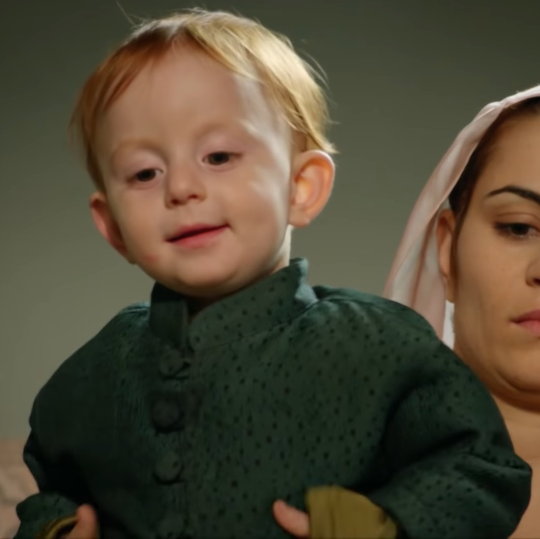





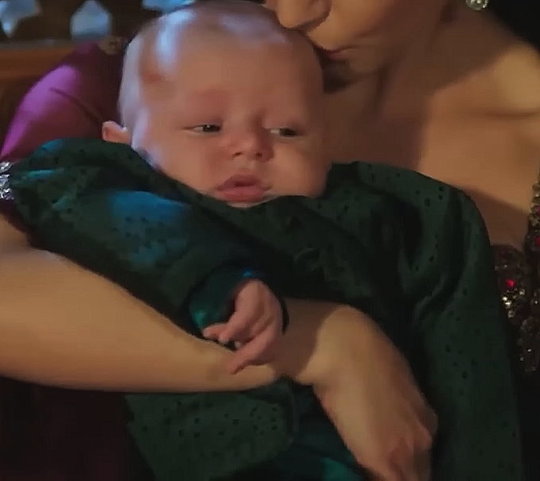
This green shirt with black dots was first worn by Şehzade Mehmed in the tenth episode of the first season of Magnificent Century. It was used again three times in the second season, first on Şehzade Bayezid in the fourteenth episode, then on Şehzade Selim (later Sultan Selim II) in the eighteenth episode and lastly on Şehzade Cihangir in the the twenty-ninth episode. The shirt was also worn twice in the fourth season by Şehzade Murad (later Sultan Murad III) and Şehzade Bayezid's son Mehmed in the eleventh and thirty-fourth episode, respectively.
Magnificent Century: Kösem used the shirt three times during its first season on Şehzade Osman (later Sultan Osman II), Şehzade Mehmed and Şehzade Ibrahim (later Sultan Ibrahim) in the fifteenth, twentieth and twenty-first episodes.
#Muhteşem Yüzyıl#Muhteşem Yüzyıl: Kösem#Magnificent Century#Magnificent Century Kösem#Magnificent Century Kosem#period drama#costume drama#historical drama#Şehzade Mehmed#Sehzade Mehmed#Şehzade Mehmed (Son of Hürrem)#Şehzade Bayezid#Sehzade Bayezid#Şehzade Bayezid (Son of Hürrem)#Şehzade Selim#Sehzade Selim#Selim II#Şehzade Selim (Son of Hürrem)#Şehzade Murad#Sehzade Murad#Şehzade Murad (Son of Nurbanu)#Murad III#Şehzade Mehmed (Son of Şehzade Bayezid)#Şehzade Osman#Sehzade Osman#Osman II#Şehzade Osman (Son of Mahfiruze)#Şehzade Mehmed (Son of Kösem)#Ibrahim I#Şehzade Ibrahim
20 notes
·
View notes
Text
Mistakes in the Magnificent Century part III
(title, ranks and traditions)
Some facts might be the same or very similar to the ones in previous parts,but they will be discussed from different angle.
1. Valide Sultan title
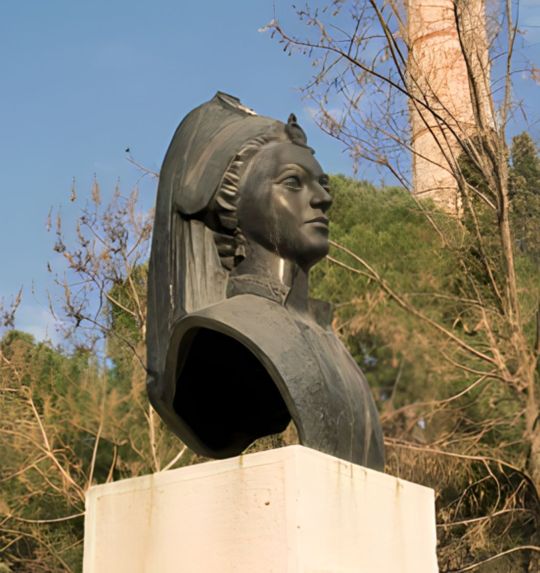
As I have spoken in the previous chapters, pre 1520 mothers of sultans were not sultans at all, they were titles as hatuns, though treated with utmost respect. In 1520 as Suleiman the Magnificent ascended the throne, he bestowed the title of Sultan to her mother Ayşe Hafsa, thus making her the first person in the ottoman history to become sultan from slavery. However, for Ayşe Hafsa being Sultan was not the same as the Valide Sultan that we know today. She was sultan yes, and she was the mother, so "Valide" was the proper address,from her children, as it was for every mother in the Ottoman empire, she was registered as "the mother of Sultan Suleiman", therefore in some sense, we can say she was not "Valide Sultan".
The first person,who actually made the "Valide sultan" a thing and officially registered herself was Nurbanu. So, the first Valide sultan with its full meaning was not Hafsa,but Nurbanu, who was registered as Valide Afife Nurbanu Sultan.
2. Haseki Sultan and Hürrem's marriage.
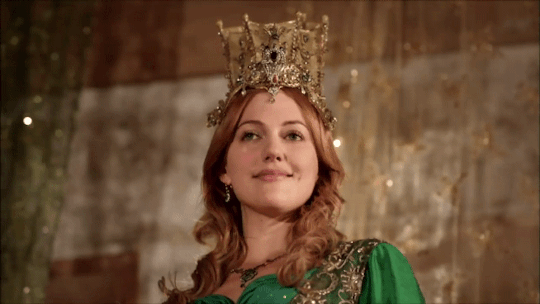
There were more than just several miscon- ceptions about the subject in the show.
First and foremost it was created specifically for Hürrem,so neither Hafsa nor Mahidevran have ever had the title. It also brought another mistake about Hafsa,that I will explain below,but now I will just make clearer how, when and why the status was created.
It was almost definitely created in mid-1534 after the death of Ayşe Hafsa Sultan and was probably legalised by their marriage, which by some sources is mentioned to be in 1533. If this is right, then it would mean, Suleiman married Hürrem before he gave her the status of Haseki and the marriage only freed her,but the most common and for me the most logical version is that after the death of Hafsa Sultan, Suleiman married her and gave her the title.
The death of Hafsa Sultan is a crucial part in the story, nor because she had some kind of objection towards Hürrem or her promotion,but the legal status of Hürrem reached its peak of necessity after her death. As we know, Ayşe Hafsa was a trusted ally and Confidant of uprising Sultan, even during his time as shehzade, so during the campaigns, his mother was the supervisor of the capital and his family, so the sultan could go to war without worrying about what he was leaving behind. However, after Hafsa's death things changed, Süleiman lost beloved mother and most trustworthy person around him, he needed to act immediately,as the campaign was near. He needed someone,whom he could entrust Harem, Family and the capital. His children were little, Sisters(whom by the way he trusted very much) were all married and Hürrem did not have a proper rank. It is said that he also discussed the candidate of high ranking harem servants, one and most promoted one of whom, in my opinion, would have been Gulfem, but he finally found the best possible solution that would affect his empire for centuries. He married Hürrem, gave her the rank of Haseki Sultan and left her in charge of the Harem, Family and the empire.
Hürrem became the first Haseki sultan in history.
Misusage of the title did not and here and there, not only the status and function,but even relevance of achievement was changed here. In the very first episode, Nigar kalfa made it clear that giving birth to a son, was enough to achieve it however, originally only the chosen ones could become Hasekis until its relevance faded during Murad's reign and completely lost exclusivity during Ibrahim's.
Essentially, the original function of haseki sultan was filling the absence of Valide, therefore only Hürrem and Nurbanu can be considered as the "original Haseki Sultans". Later many women were given the status, however the show made it wrong. Mahidevran,Mahfiruz and Halime never held it, however Şevikar, referred as Şevikar hatun in the show, was actually Haseki Şevikar sultan, the fifth Haseki of Ibrahim, three of whom, Ayşe, Mahinerv and Saçbağli, were left out, which is kind of understandable, because they had no importance in plot, unlike Turhan, never became Valide,unlike Saliha Dilaşub and Muazzez and had no influence on Ibrahim,Unlike Şevikar and Humaşah.
Their social standing is also misportrayed in the show, where Haseki ranks below and bows to imperial princesses, while in real life it was the other way around.
3. Daughters of Ottoman Princesses
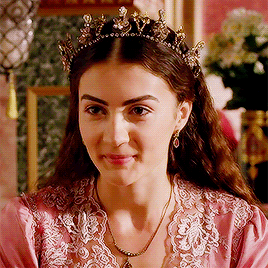
In the show, we met three daughters of the ottoman princesses: Esmahan,Huriçihan and Humaşah. They are referred to as Sultans,but in real life the daughters of imperial princesses were not called so,instead they had the title Hanimsultan and ranked even below the imperial consorts. The only exception to that was Humaşah, the daughter of Mihrimah Sultan, who received the title and prestige of the Sultan.
4. Harem Kalfa

In the show, they are just giving people the rank left and right. Nigar was already a high ranking, trusted servant of harem,but it turned out that she had only been there for 6 years. Fidan hatun was banished for attacking Sultan,but after a while she returned and became Kalfa, in Kösem melek hatun received rank out of the blue etc.
In real life, however, becoming kalfa was a long process. As we know,there were hundreds or even thousands of girls in the harem,but only a handful of them would become favourites,but what would happen to others? After ten years of being a harem resident some of them would have been transferred from harem and soon married off, some could by freedom, while others, usually the smartest and most responsible ones,would go to a special school that lasted two years, they would revive extensive training, both intellectual and physical, after that they could return in harem as teachers and overseers and if they were good enough they could promote.
There was actually quite a complicated hierarchy of harem servants,not only there were Kalfa's who had duty to supervise certain works like food or laundry(later even coffee),but there were administrative ranks, that they could achieve:
Mistress chief treasurer(Baş Hazinedar usta): she was head of the harem treasury.
Treasurers(Hazinedars): there were other hazinedars as well, who worked in harem treasury. Baş hazinedar usta was their direct superior.
Imperial Kalfa(Hünkar Kalfası): Personal kalfa of the padişah.
Lady stewardess(Kahya kadin/Kethüda Hatun): she ranked below imperial consorts,but her role raised during sultanate of women, when Gülfem and Çanfeda held the office, they were right hand women of Chief Harem managers(Hürrem and Nurbanu) therefore second in command of the Harem.
Senior Kalfa(Büyük Kalfa): Head of Kalfas, she was responsible for literally everything that was happening in the harem, sultans and şehzades treated her with respect and called "my kalfa" or "your grace"
Lady secretary: secretary of administrative organs of harem.
Junior kalfa( Küçük Kalfa): Senior kalfa was their direct superior. They had ranks within( second- ranking, third ranking, novice etc.) They were sometimes teachers and daily overseers.
Çanfeda for example entered the harem with Nurbanu, so in late 1530's or early 1540's. Nurbanu became favourite and went to Manisa, while Çanfeda remained in the old palace, in 1566 she was already a high ranking kalfa in the old palace, when Nurbanu called her. That would mean she was sent to train as kalfa in late 1540's or yearly 1550's, therefore she would have a decade or two to raise in ranks.
5. Princely harem.

In the magnificent century, prince usually gets his harem, whole in Topkapi palace, which is the lie through and through. They went even further and made up with the rule that the prince can not have a child with their concubine until they get their province to rule. Why would they be allowed to have concubines,but not having a child, when contraception is still unreliable.
Actually, their case was far more easier, princes would revive their sanjaks while still very young, their mothers, governesses and close servants would carefully choose their harem and leave the palace with their mother and full sisters. That also brought another mistake in the show. In the flashbacks, we can see Ayşe Hafsa and Hatice visiting Suleiman in Manisa, however Ayşe Hafsa along with Fatma and beyhan left for Manisa with Suleiman in 1512, while Hatice,being 4 years older than Suleiman, got married the same year.
6. Regency
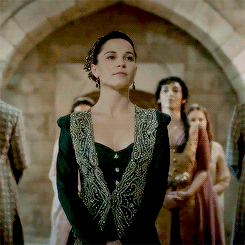
They introduced Kösem's regency as something unheard of,while completely neglecting Handan and Halime.
Handan was the first woman ever to rule as regents in her son's stead. She appointed viziers, discussed political matters and built a trusted circle for her son.
Halime was not officially registered regent but due to the insanity of her son, paşas asked her to rule the state after the rebellion she herself organized.
Kösem's and Turhan's regency is well known, so I will not speak about it.
7. Kösem's wedding

Not exactly the mistake as it is not proven, but as the event is highly unlike, I'll just put it there.
In 1609 it is said that Ahmed had four children with two women,but neither of them were married to him. In the two latters, one form 1612 and other from 1616, the 1612 letter straight out mentions her as sultan's concubine, who he loves the most and in 1616 she is mentioned as juts Haseki,but nothing is said about the marriage( I am not adamant about him not marrying her,I am just saying that it's unlikely, however I admitt she might indeed was concubine in 1612 and after the death of Mahfiruz, Ahmed married her and raised her stipend),however early in Kösem's regency vencians questioned ottoman practice, that mother of sultan was honoured and even given the regency,despite not being married to his father. As we know in Venice and generaly in Europe, source of power for woman was her marriage and not just motherhood. That is a time, when it was "unrevealed" that ahemd married her before he died,(if that latter is to be believed than Kösem and Ahmed did not marry in 1613), now it was actually thought that it was false information used by Kösem to strengthen her position in the eye of Venice as they needed friendly relation with them. That is not widely accepted,but it can be strengthened by the fact that Vencians still did not believe it, so perhaps they knew for sure that it was lie?
8. The death of Halime sultan and Mustafa.

In the show Halime, like many others, is victim of making Kösem seem more powerful, while Mustafa was killed by Murad. In real life, Mustafa died of natural causes, probably because of epilepsy in 1539, he was buried in Hagia Sophia and the coffin was placed in a mosque built for him. Halime is buried next to him and no permission of reburial was asked or granted, therefore Halime was not killed by Kösem, she went to the old palace and lived a long life.
9. 1517-1540
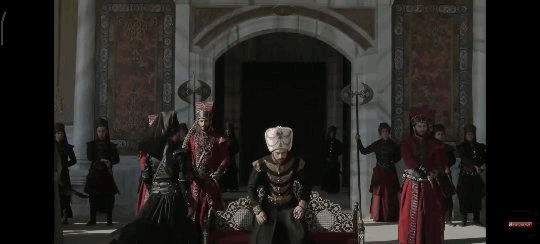
I'll be honest, I don't remember much of those episodes, they were boring and monotonous for me, but what I remember is one part from Kösem's iconic " The state you are talking about is mine" speech. She mentioned that she took over the reins of the state from Ahmed 15 years before the event, well that is a huge lie. Though the show runners tried to make Kösem all powerful, the invincible mastermind behind every single breath people drew in the empire,but she was actually quite powerless from time to time and the period between 1617 and 1623 is one of such. She was still young and inexperienced that time and main powerhouses in the empire were Halime and Osman's faction and she was not the leading force during any of the rebellions, she was allie of Halime, who, according to many historians, had major influence that time and the great impact on Kösem. Some even go as far as claiming that she persuaded Osman to kill Mehmed, so Kösem would take her side.
In short, Kösem did not have reins of sultanate for 15 years,but only about 10.
As I said, I don't remember much about the episodes, but from what I remember, Kösem had something to do with Murad's death. I'll be short on this: that's a lie.
10. Coup of 1648

The show made Kösem something of a filicidal tyrant. However, In real life her tyrannical tendencies appeared only after the death of Ibrahim, which he had nothing to do with. The ones behind the incident were Turhan and her faction. Kösem indeed took part in the Ibrahim's dethronement for the good of everyone,but mainly because she had seen the mad sultan dethroned,but lived. Mustafa had a similar situation,he was dethroned and locked in kafe, while his mother was sent to the old palace, which Kösem was absolutely willing to do. However, Turhan made her move and had Ibrahim executed to get rid of opposition for good, or perhaps because of the old resentment. Things did not go exactly as she had planned though, Kösem became regent and visibly started to avenge Ibrahim's death, it became clear that she was not going to hand over any power to Turhan and after she started to oppose even went as far as attempted dethronement of Mehmed(however she was not going to kill him.)
Therefore the child killing monster the show made her become is straight out a lie. One of her sons died of natural causes and the other was killed by outer forces, that she tried to avenge.
#history#historical drama#16th century#magnificent century#magnificent century kosem#mc: kosem#ottoman empire#ottomanladies#historical events#historical figures#sultanate of women#haseki hurrem sultan#hurrem sultan#nurbanu sultan#kosem sultan#safiye sultan#muhtesem yuzil kosem#historyedit#historical#ottoman sultanas#ottoman history#ottoman#mistakes in the magnificent century
203 notes
·
View notes
Text
Taylor Swift's 'The Eras Tour': ALL OUTFITS, PT. II (2023)
folklore:





1989:




SURPRISE SONGS:




MIDNIGHTS (I):






MIDNIGHTS (II):



MIDNIGHTS (III):




folklore - Alberta Ferretti, 1989 - Roberto Cavalli, SURPRISE SONGS - Jessica Jones, MIDNIGHTS - Oscar de la Renta (t-shirt dresses, fur coat & bodysuit 1) & Zuhair Murad (bodysuit 2 & 3)
pt. I
#taylor swift#the eras tour#alberta ferretti#roberto cavalli#jessica jones#oscar de la renta#zuhair murad
65 notes
·
View notes